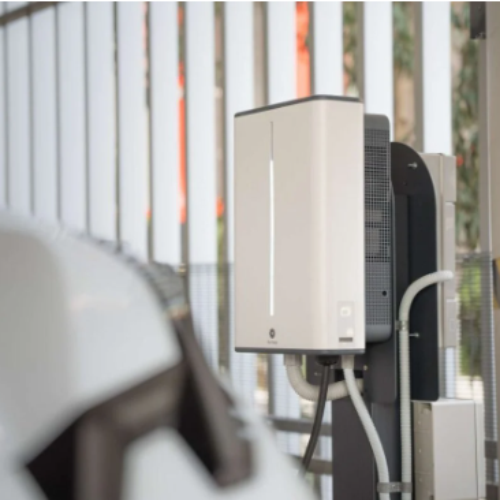With energy resilience high on the policy agenda for the new government, John Behan, CEO of AMPYR Distributed Energy, discusses the pivotal role that distributed energy and private finance will play in the energy system of the future.
The energy landscape is changing at a rapid pace and, for businesses, the need to decarbonise is driven by both commercial and compliance considerations. It’s not just a cost concern, but also about mitigating supply risks and creating long-term certainty in a disrupted market. Add to this growing sustainability pressure from stakeholders, and the conversation moves from embracing best practices to ‘do it or be left behind’.
According to Energy Secretary Ed Milliband: “The only way to protect ourselves as a country for the long-term is to deliver cleaner, cheaper, homegrown energy – boosting our energy independence, creating jobs and tackling the climate crisis.” Indeed, as we move away from large-scale centralised generation to a more fragmented decentralised model, distributed energy will take centre stage.
But what is distributed energy, how is it helping to address concerns over resilience, supply security, compliance and decarbonisation, and why is it considered such a game-changer in an energy landscape now giving decarbonisation a sense of urgency not previously seen?
What is distributed energy?
Distributed energy is the name given to energy generated onsite, or close to where it will be used. It includes rooftop and ground-mounted solar PV modules, as well as wind turbines and battery storage. Such resources have an important role to play in the energy landscape of the future and can be used to improve system reliability and reduce overall energy costs. Siting energy generation near where it will be used also reduces transmission losses, mitigates the need for future grid upgrades and enables the rapid deployment of renewables.
How can distributed energy help businesses?
Decarbonising operations and accelerating towards net zero is fast becoming a board-level business priority. Amid energy price volatility, rent hikes, supply chain disruptions and rising inflation, businesses are looking for sustainable, funded solutions to streamline the balance sheet.
To accelerate progress, earlier this year policymakers removed planning permissions surrounding flat roofs, as well as scrapping the 1MW restriction for industrial rooftop solar and relaxing planning around solar canopies on car parks. With the new government looking to fast-track greener energy adoptions and electrifying the grid, the emphasis on tripling the adoption of solar by 2030 has really put the opportunity for onsite generation front and centre for businesses looking to decarbonise. The fact that it can now be achieved with no upfront costs could be a game changer.
Distributed energy offers several business-critical advantages. It not only helps to reduce energy costs (in some cases by up to 50%) and lower carbon emissions but also supports business resilience by reducing reliance on a centralised energy supply. Thanks to the availability of Power Purchase Agreements (PPAs), an agreement that sees renewable energy generation technology installed by a provider and sold to a customer at a cost-effective fixed price, distributed energy is affordable and easy to implement. What’s more, it delivers these benefits almost immediately.
Where is distributed energy most beneficial?
Any business where there is available rooftop space can take advantage of rooftop solar, the fastest growing and most accessible form of onsite generation. In fact, there are several sectors where energy use is high, such as industrial centres and warehousing, and so is the potential for onsite generation.
We are engaged with a wide range of businesses, from sports stadia and conference centres to distribution hubs and factories, all keen to harness the benefits of onsite generation. The primary concerns of course are how much will it cost and what the risks might be. When funded by the PPA model, for example, there are no upfront costs, making adoption of renewable energy technologies much more accessible for many.
One sector that has already identified an industry-wide opportunity for solar is the warehouse sector, which is experiencing rapid growth. The UK Warehousing Association’s (UKWA) own research identified that UK warehousing has the roof space for up to 15GW of new solar, doubling the UK’s solar PV capacity.
Because the UK’s 20% largest warehouses can provide 75 million square metres of roof space, it helps to avoid the need to develop new land equivalent to the footprint of 500,000 houses. Projected to reduce energy costs by between 40-80%, the UKWA estimates that in aggregate rooftop solar PV has the potential to save the industry £3 billon per year.
Other energy intensive sectors such as data centres are turning to renewable energy to help decarbonise operations as they come under increasing pressure to operate in a sustainable way.
Overcoming risk
Many businesses may think that going beyond renewable energy procurement, to explore areas such as onsite generation, is too daunting, especially with challenges and barriers around grid connections, capacity, returns, pricing and liabilities.
However, when it comes to distributed energy, the models for deployment have been tried and tested worldwide. At ADE, for example, we have an initial fund of £100 million to deploy on projects in the UK and across Europe. What this means in practice is that businesses can access both the expertise and the funding required to secure a system that is right for them, with no upfront costs.
We understand that businesses don’t want renewable energy installations to be a liability, so having a partner that goes far beyond just the acquisition and installation of renewable energy assets and looks for ways to drive optimal performance and value – year in, year out, is going to be critical.
Making distributed energy systems work hard for business
Ultimately, onsite generation, when done well, can save organisations money, increase energy security, increase business competitiveness and ensure compliance… all while ensuring a better world for us all.





